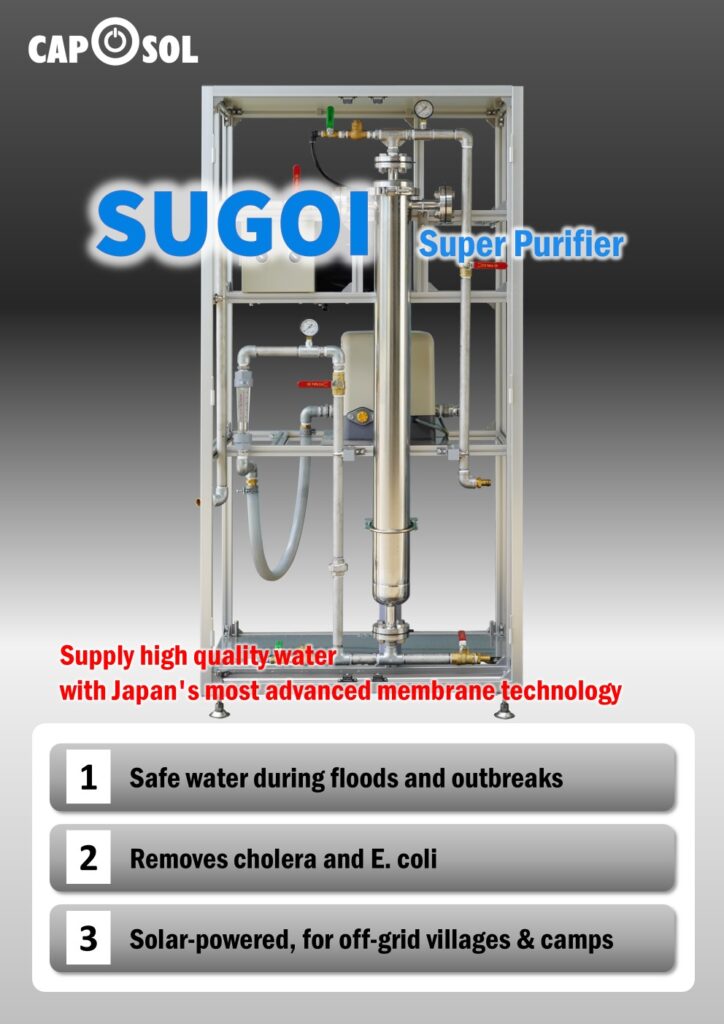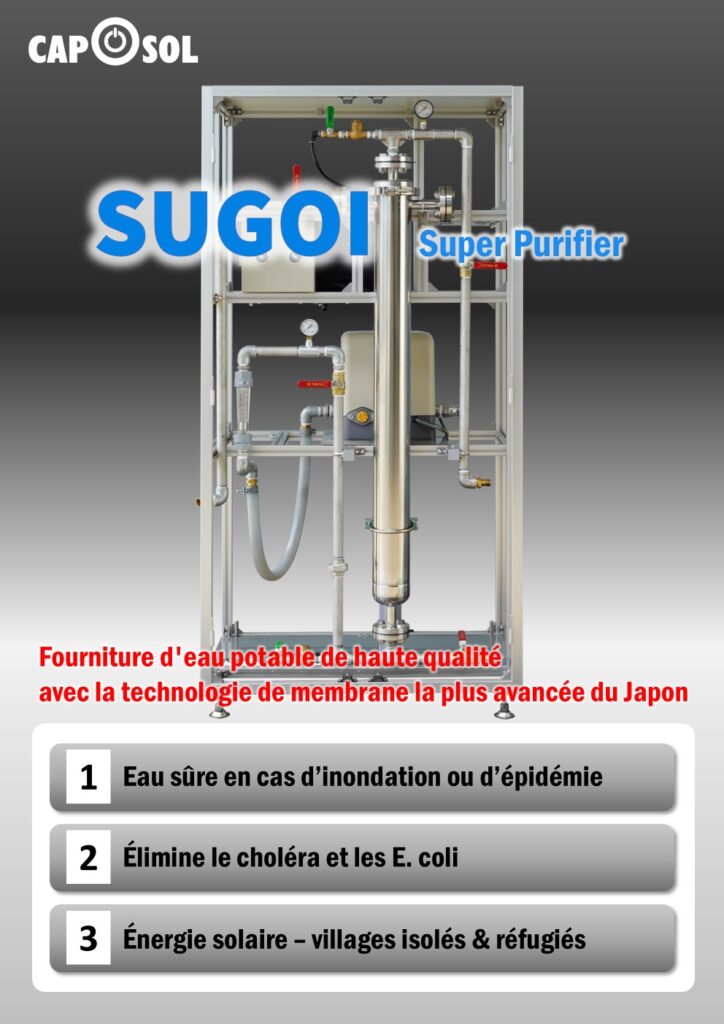Challenges of Drinking Water
Many regions in the world lack safe and clean drinking water, especially in rural areas of Sub-Saharan Africa, where this problem is very serious. In these areas, groundwater is the main water source. Even though it looks clear and clean, it is not always safe. Groundwater may contain invisible viruses and bacteria, which can cause waterborne diseases and serious health problems.
In many villages, there are no proper water purification systems, so people have no choice but to use groundwater or surface water directly. To solve this issue, it is urgent to introduce sustainable water purification technologies that fit the local environment. These efforts aim to improve people’s health and create a better living environment.
A Reliable Water Purification System for Disasters
Microorganisms such as norovirus, Escherichia coli (E. coli), and Vibrio cholerae are major causes of waterborne infectious diseases. Among them, norovirus is one of the smallest viruses that cause gastroenteritis, measuring approximately 27–38 nm in size. Due to its extremely small size, it is difficult to remove using conventional bacterial filtration systems.
However, our advanced water purification system is designed to effectively eliminate norovirus, significantly improving the safety of purified water.
Additionally, during floods and other water-related disasters, the risk of infection from E. coli and Vibrio cholerae increases. These bacteria are approximately 100 times larger than norovirus (around 1–3 µm), making them easier to remove. Our purification system efficiently and reliably eliminates these harmful bacteria.
With our high-performance filtration technology, we can prevent health hazards caused by viruses and bacteria and ensure access to safe drinking water, even in emergency situations.
Hollow Fiber Filtration Membrane Technology
Japan’s advanced membrane filtration technology can remove not only dirt but also viruses and other harmful pathogens. This system does not use any chemicals and provides very stable water quality. It has already been exported and widely used around the world.
However, traditional systems require a stable commercial power supply for filtration, which has limited their use in developing countries. To solve this problem, we have developed an energy-saving system that improves this technology.
This new system works with solar power technology that does not need batteries. It is designed to supply a large amount of safe drinking water even in areas without electricity infrastructure. This makes it possible to provide clean water to more regions and helps build a sustainable water supply system.
Purification Capacity & Membrane Cleaning Function
In areas facing severe water shortages, our smallest device can produce up to 1,000 liters per hour of clean drinking water. Many regions around the world, especially rural areas in developing countries, struggle to ensure safe water quality.
Our water purification system can filter about 1,000 liters of drinking water per hour from general surface water sources. It is also scalable, meaning the system can be expanded depending on demand.
Additionally, the automatic cleaning function helps reduce maintenance costs by extending the life of the filter membrane. Depending on water quality, even with 8 hours of daily use, the membrane lasts over five years, ensuring a stable water supply.
Slow Sand Filtration
Slow sand filtration is a technology that can handle highly turbid (muddy) water by using coagulants, which improve filtration speed. However, a chemical-free method (without coagulants) is more environmentally friendly but less effective for highly turbid water.
One challenge with this method is that bacteria activity can cause sand layers to harden, requiring regular maintenance. In small-scale systems, this maintenance can be difficult because it requires manual labor, time, and technical knowledge.
Another challenge is that slow sand filtration requires a large installation space. While it is effective for large-scale water treatment, it becomes economically difficult to introduce in small communities with fewer than 5,000 people due to high installation and maintenance costs.
For small-scale regions or highly turbid water sources, combining slow sand filtration with simpler, low-maintenance alternatives is often necessary to create a more efficient and sustainable water treatment system.

